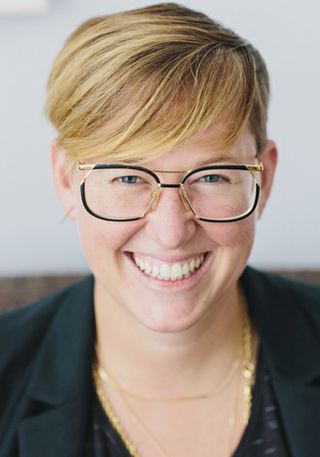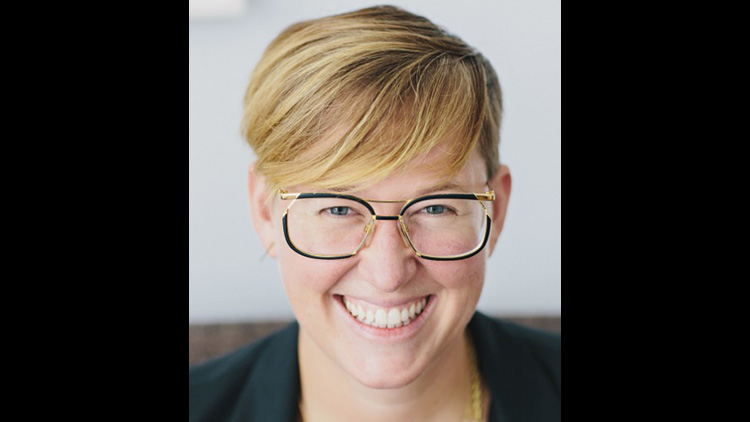Q&A With Alexis Seeley, Associate Dean, Barnard Library and Academic Information Services & Digital Commons, Barnard College
Since its founding in 1889, New York-based Barnard College has positioned itself at the intersection of scholarship, social engagement, and culture. As a distinguished leader in higher education, Barnard offers a rigorous liberal arts foundation to women whose curiosity and drive set them apart. Cutting-edge technology is just one tool that the school utilizes to differentiate itself, outfitting students with the latest equipment to sharpen skills and enhance career readiness. For our June edition of AV Technology, we asked Alexis Seeley, Associate Dean of Barnard Library and Academic Information Services & Digital Commons, Barnard College, to share some of the school’s strategies for classroom support, the migration to network-based systems, and wireless collaborative technology.

Alexis Seeley
AV Technology Magazine: Please tell us about your department and your areas of technological focus.
Alexis Seeley: Our department is responsible for the AV in all of the classrooms and events spaces on campus. We provide classroom support and faculty training, and are always searching for new technologies that can enhance and streamline our systems.
We also manage academic technology, which involves maintaining a web environment for student projects and a video production facility, along with more traditional instructional technologies.
AV Technology Magazine: How is AV/IT convergence playing out in your facility?
Alexis Seeley: At Barnard, AV and IT are not in the same department. As audiovisual technology continues to move towards networked-based systems, AV relies more heavily on the IT infrastructure. The ability to wirelessly display student work from personal devices in the classroom requires wireless networked capabilities that create security concerns for our IT department.
AV Technology Magazine: What AV/IT problems have you solved recently?
Alexis Seeley: We have started to shift towards using laser projectors to cut the need for expensive replacement of bulbs each year. We have also been simplifying systems. There was a time where each classroom AV system was created with a complicated matrixed system, and we are moving away from that model. We want to design and install systems that work for our particular use case and needs, instead of installing a system that is too complex for the actual needs of the user.
AV Technology Magazine: Does the IoT (Internet of Things) have any influence in your organization and or facility? If so, what is your IoT strategy?
Alexis Seeley: For Barnard’s 125th Anniversary, we created a Barnard Augmented Reality app that used site-specific elements to connect people to the college’s digital archives and student created video projects. We are in the process of designing a curriculum around movement science that will continue to allow us to experiment with AR and the IoT.
AV Technology Magazine: What AV/IT do you hope to buy in the near future? Why?
Alexis Seeley: Barnard is in the final stages of solidifying the AV specifications for the new Cheryl and Philip Milstein Teaching and Learning Center, which is currently under construction on campus. We are creating a new classroom model and infrastructure that will allow wireless projection and screen sharing to foster collaboration.
AV Technology Magazine: How do you procure/purchase your AV for in-house installs?
Alexis Seeley: We purchase our equipment mostly from distributors. Being in NYC, we are lucky to have many local options for emergencies or if we need equipment for a quick turnaround.
AV Technology Magazine: Where are technology manufacturers getting it wrong or missing opportunities?
Alexis Seeley: To keep up with latest trends and innovations, manufacturers need to change the technology so quickly that not every feature gets moved into the next version. For the end user who relies on certain tools or features, this can be a big challenge.
What is the biggest obstacle to collaboration? What are your collaboration strategies?
Alexis Seeley: The biggest obstacle to collaboration is the fact that AV and IT are separate departments. Collaboration and communication between AV and IT is extremely important. Our greatest challenge is aligning classroom design with active learning and more traditional instructional methods.
GO FIGURE: Inspiring Futures at Barnard College
● Barnard College's new curriculum, Foundations (implemented for the class of 2020 as they arrived on campus last fall), requires all students to complete a course in Technological & Digital Thinking, positioning Barnard as the first among our liberal-arts college peers to include technology in their General Education requirements.
● Construction is currently underway on The Milstein Center, which will be a state-of-the-art teaching and learning center.
● Barnard College is an affiliate college of Columbia University, and Barnard students are able to partner with the engineering school there for a variety of • undergraduate and post-graduate programs.
● Barnard’s faculty have used digital technologies to connect on-campus learning to major institutions in NYC, including the Schomburg Center, New York Historical Society, and the Metropolitan Museum of Art. More information on Barnard's on/off-campus digital initiatives.
MORE INFO
BARNARD COLLEGE
http://barnard.edu/











